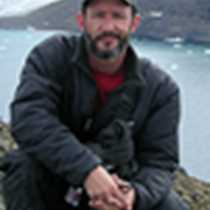At Sea
During our expedition we left one continent, South America, visited another, Antarctica, and are heading towards a third, Africa. We have covered quite a distance and still have some to go.
During our sea time and anchor time we have experienced the whole spectrum of weather. From absolutely still air with nary a ripple on the water to category two hurricane force winds well over 100 miles per hour! The southern seas are the windiest, on average, of any water in the world, so it would make sense that we have had a “windy” trip. The mighty air only stopped us a few times from either approaching a landing or even making one.
As we finish up this expedition with a few days at sea, we can look back at this extraordinary journey we have been on. Many memories fill our thoughts, but one will definitely be the winds we have experienced, enjoyed, cursed at, and marveled.
The photo is of our trusted anometer, or wind indicator. It shows a wind speed (in knots—also called nautical miles per hour), the direction it is coming from (in degrees), and our air temperature along with the barometric pressure (in millibars). So our conditions are about 30 knots (35m.p.h.) of wind from the north with an air temperature of 21.4 degrees C (71 degree F) and enjoying high pressure. Many of us have become experts at the location of the readout on the bridge and what the numbers mean. This skill is another aspect of the high seas that a good sailor learns.
Among the talks, briefings, and meals we passed a notable line on the map. Zero degrees longitude. We have now sailed from the western to the eastern hemisphere.
During our expedition we left one continent, South America, visited another, Antarctica, and are heading towards a third, Africa. We have covered quite a distance and still have some to go.
During our sea time and anchor time we have experienced the whole spectrum of weather. From absolutely still air with nary a ripple on the water to category two hurricane force winds well over 100 miles per hour! The southern seas are the windiest, on average, of any water in the world, so it would make sense that we have had a “windy” trip. The mighty air only stopped us a few times from either approaching a landing or even making one.
As we finish up this expedition with a few days at sea, we can look back at this extraordinary journey we have been on. Many memories fill our thoughts, but one will definitely be the winds we have experienced, enjoyed, cursed at, and marveled.
The photo is of our trusted anometer, or wind indicator. It shows a wind speed (in knots—also called nautical miles per hour), the direction it is coming from (in degrees), and our air temperature along with the barometric pressure (in millibars). So our conditions are about 30 knots (35m.p.h.) of wind from the north with an air temperature of 21.4 degrees C (71 degree F) and enjoying high pressure. Many of us have become experts at the location of the readout on the bridge and what the numbers mean. This skill is another aspect of the high seas that a good sailor learns.
Among the talks, briefings, and meals we passed a notable line on the map. Zero degrees longitude. We have now sailed from the western to the eastern hemisphere.



